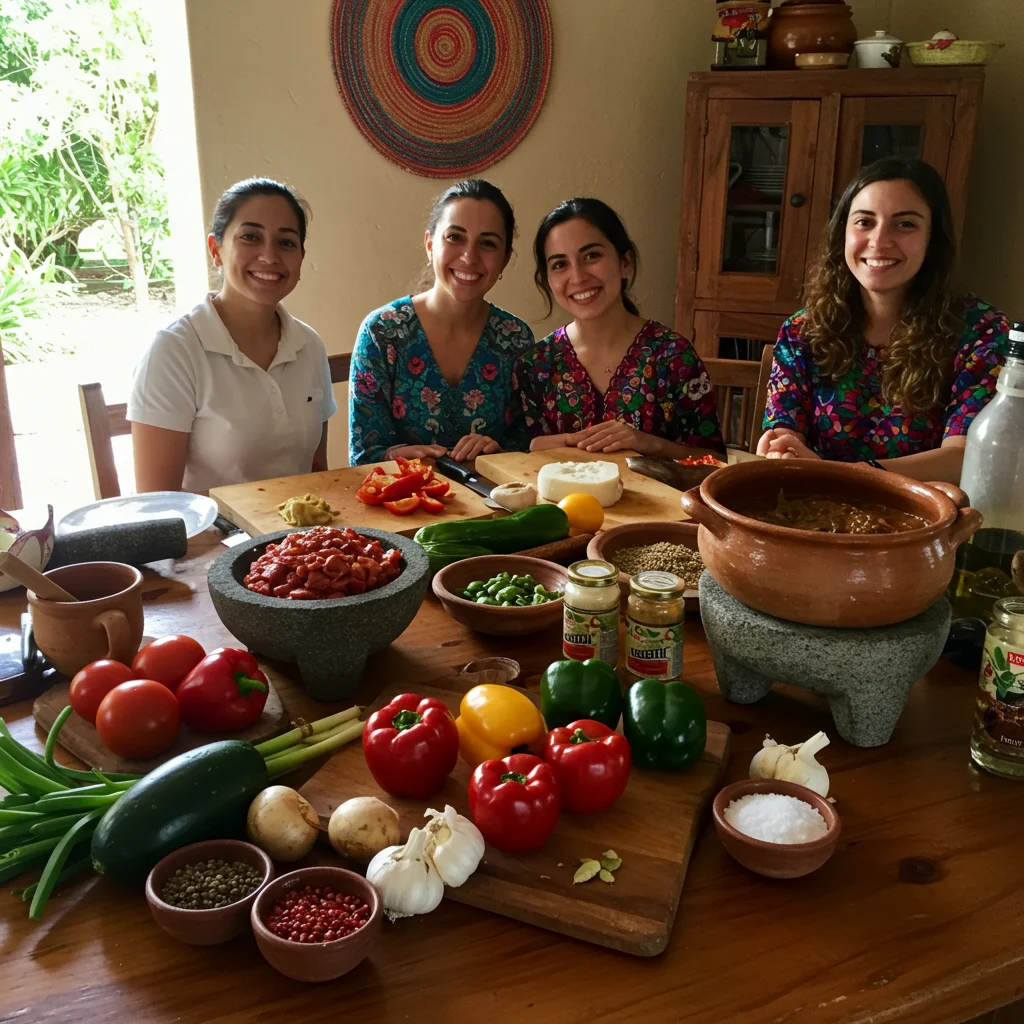What Makes Mayan Pepian Unique?
Mayan Pepian stands as one of Guatemala’s most celebrated traditional dishes. Known for its rich, complex flavors and deep historical roots, this hearty stew captures the essence of indigenous and colonial influences that have shaped Guatemalan cuisine for centuries. Preparing Pepian at home offers not only a delicious meal but also a hands-on journey into the heart of Mayan culinary heritage.
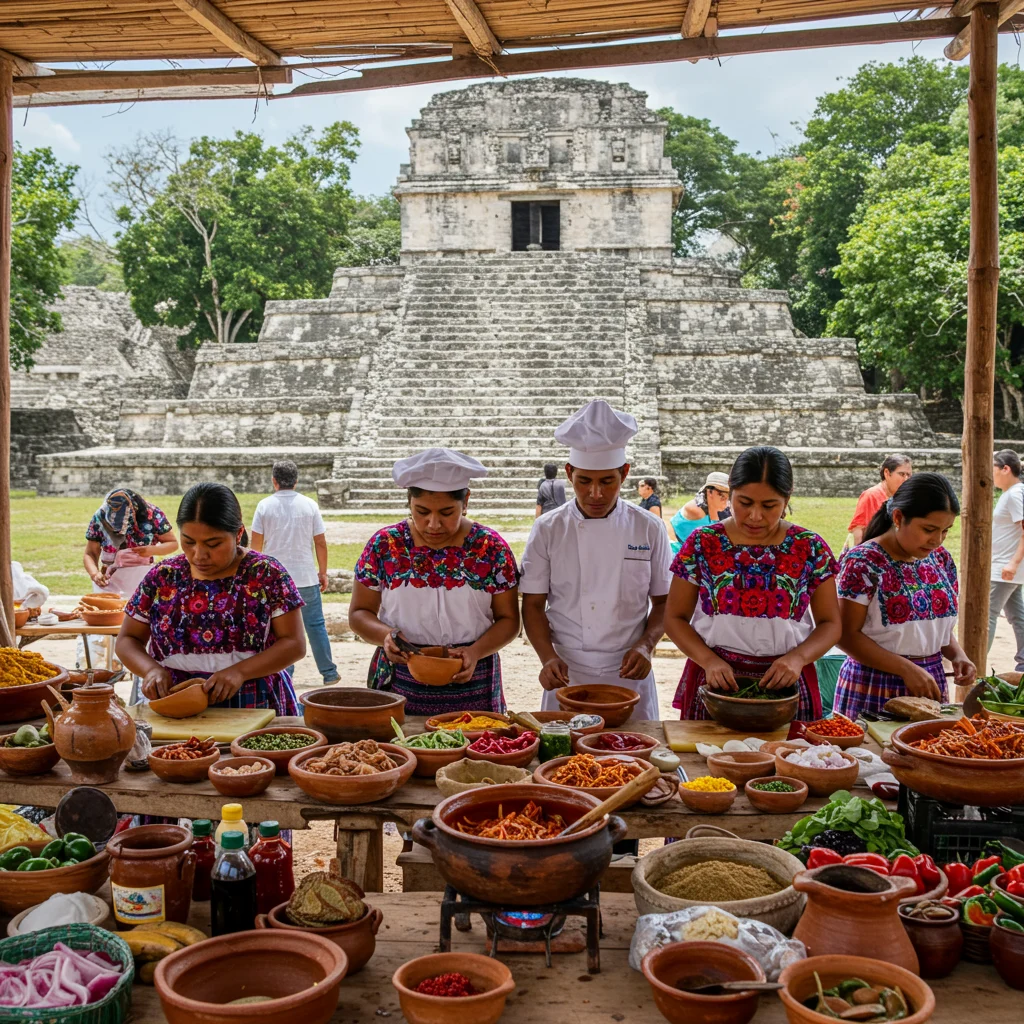
What Is Mayan Pepian?
Pepian is a thick, aromatic stew that typically combines roasted spices, seeds, vegetables, and a choice of protein, all simmered together in a vibrant, earthy sauce. The result is a dish with layers of flavor and a distinctive smoky aroma, perfect for sharing with friends and family.
A Brief History of Pepian
The origins of Pepian reach back to pre-Columbian times, when the Maya cultivated native ingredients and developed advanced cooking techniques. Over the centuries, Spanish colonial influences introduced new spices and proteins, blending with indigenous traditions to create the Pepian we know today. This dish has become a symbol of Guatemala’s rich, multicultural history.
Why Try Making Pepian at Home?
Cooking Pepian at home allows us to connect directly with Guatemalan culture. The process is deeply rewarding, filling the kitchen with enticing aromas and offering a chance to experiment with new ingredients and techniques. Hosting a Pepian cooking class can also be a memorable way to bring people together, much like a Parmigiano Reggiano tasting experience brings Italian traditions to life.
The Cultural Significance of Pepian in Guatemala
Pepian is more than just a meal; it is a staple at family gatherings, special celebrations, and community festivals. Preparing and sharing Pepian is an act of cultural preservation, passing down generations-old recipes and honoring ancestral traditions. Each region and family may have its own variation, reflecting local customs and ingredients.
How Does Pepian Differ from Other Stews?
Unlike many other stews, Pepian is defined by its use of roasted seeds (such as pumpkin and sesame), dried chilies, and a blend of fresh herbs. These elements create a sauce that is both robust and subtly smoky, setting it apart from simpler broths or tomato-based stews found elsewhere in Latin America.
Which Ingredients Are Essential for Authentic Mayan Pepian?
To achieve the true depth of flavor in authentic Mayan Pepian, sourcing the right ingredients is key. While some substitutions are possible, certain elements are irreplaceable for capturing the essence of this dish.
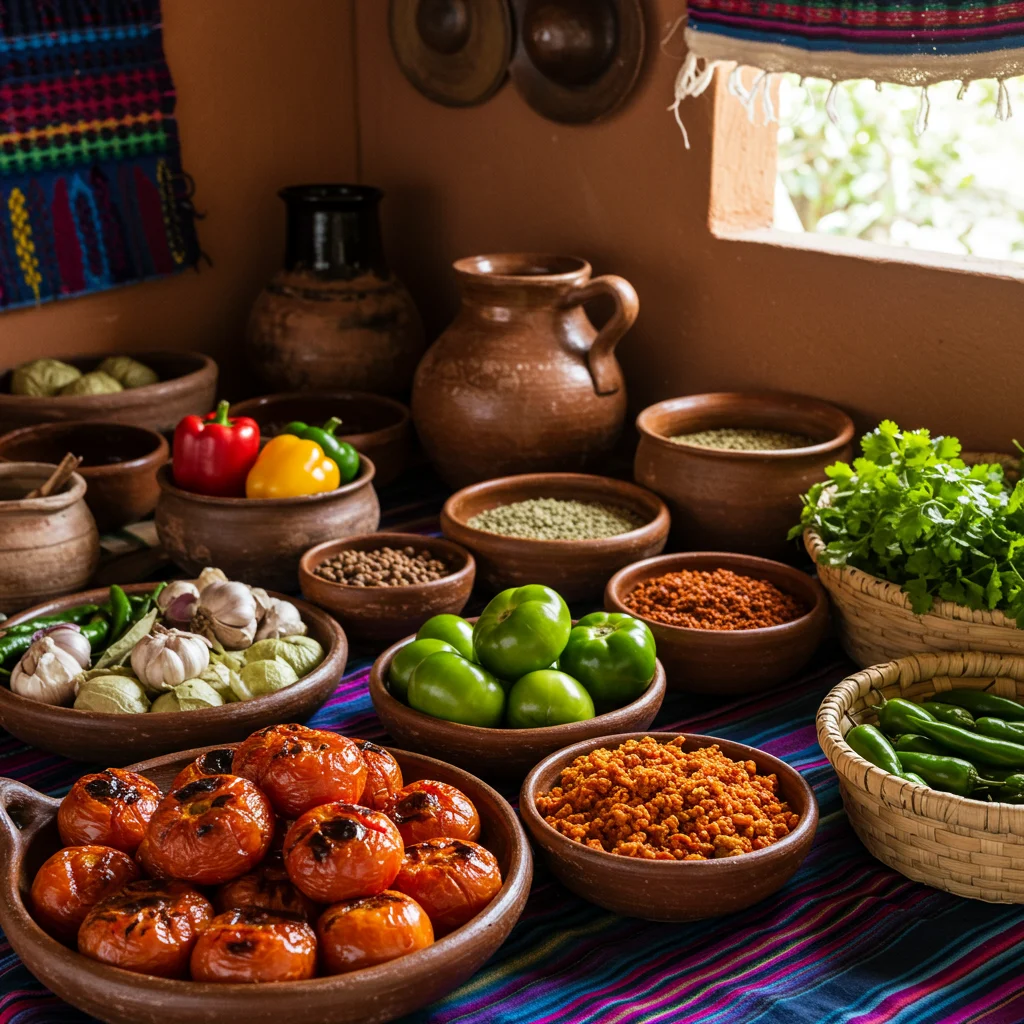
Traditional Proteins: Chicken, Beef, or Pork?
Chicken is the most common protein in Guatemalan Pepian, lending a delicate flavor that absorbs the sauce beautifully. However, beef and pork are also used, each contributing their own richness and texture. The choice often depends on family tradition or regional preference.
Vegetables Commonly Used in Pepian
Classic Pepian includes a variety of vegetables, such as:
- Potatoes
- Carrots
- Green beans
- Chayote squash
- Tomatoes
These vegetables provide substance and absorb the flavors of the sauce, creating a satisfying, well-rounded meal.
The Role of Spices and Seeds in Pepian
What truly defines Pepian is its distinctive blend of roasted spices and seeds. Key ingredients include:
- Pepitas (pumpkin seeds)
- Sesame seeds
- Guajillo or pasilla chilies
- Cinnamon stick
- Whole black peppercorns
These are toasted to release their oils and fragrance, then ground to form the base of the sauce.
What Are the Must-Have Herbs for Flavor?
Fresh cilantro and parsley are essential for finishing Pepian with a burst of herbal brightness. Some cooks also add bay leaves or a sprig of epazote for additional depth.
Substitutions for Hard-to-Find Ingredients
If you struggle to find authentic Guatemalan chilies or chayote, substitute with similar mild dried chilies or use zucchini in place of chayote. While the flavor may vary slightly, the spirit of Pepian remains intact.
For those interested in plant-based adaptations, there are creative approaches similar to those featured in our guide to vegan and vegetarian food tours.
What Tools and Equipment Do You Need for Pepian?
Having the right kitchen equipment streamlines the preparation of Pepian and ensures a smooth cooking class experience. Both traditional and modern tools can be used successfully.
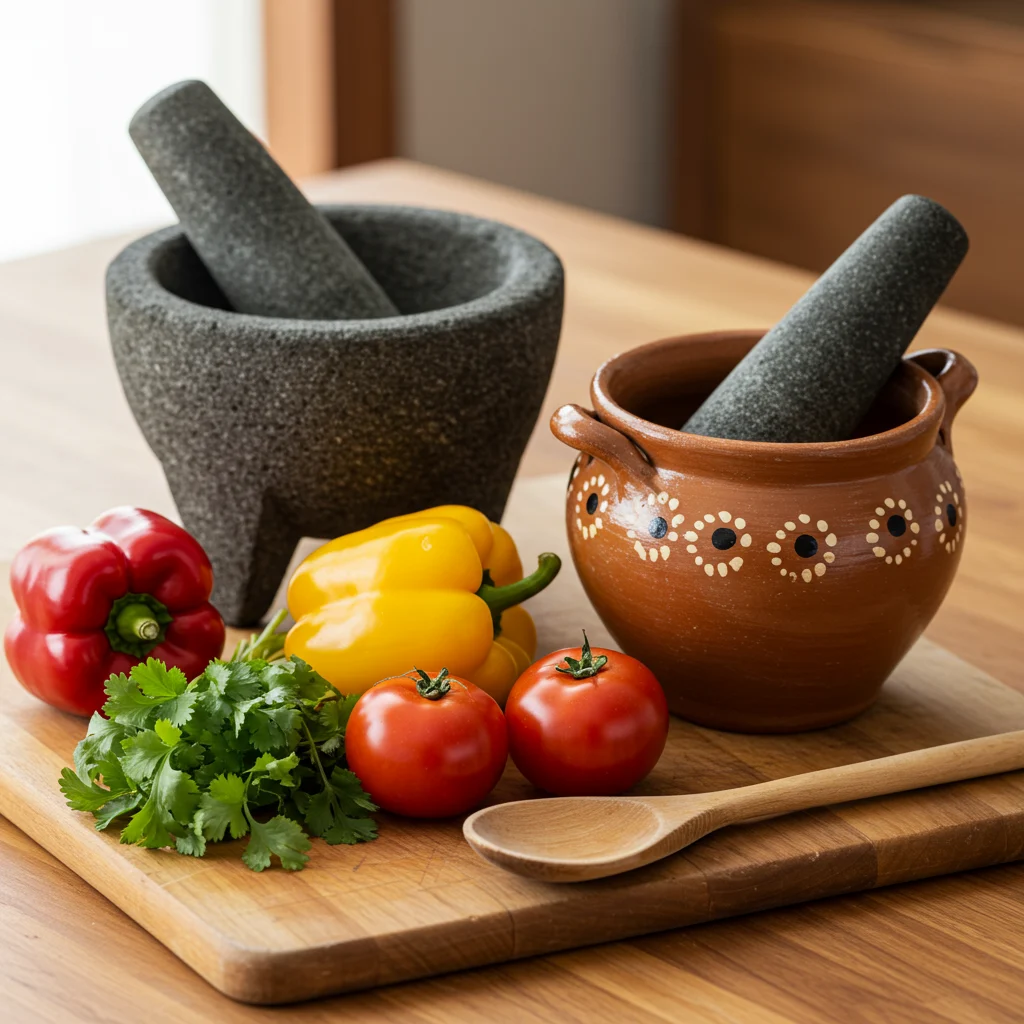
Essential Kitchen Tools Checklist
- Large stew pot or Dutch oven
- Skillet or comal for toasting spices
- Blender or food processor
- Sharp knives and cutting board
- Wooden spoon
- Fine mesh strainer
These items help you achieve the right texture and richness in the finished dish.
Traditional vs. Modern Cooking Methods
Traditionally, Pepian is prepared over an open flame, using a clay pot and stone mortar. Modern home cooks often use gas or electric stovetops, blenders, and stainless steel cookware. Both methods can produce excellent results, but the key is to toast and blend the spices thoroughly for maximum flavor.
How to Prepare Your Cooking Space
Before you begin, clear your workspace and gather all ingredients and tools. Lay out bowls for chopped vegetables, marinated proteins, and pre-measured spices. This mise en place approach keeps the process organized and enjoyable, especially when cooking with a group.
How Can You Make Your Own Mayan Pepian at Home?
Crafting Mayan Pepian involves several key steps, each contributing to the dish’s signature flavor and texture. Taking your time with each stage will yield the most satisfying results.
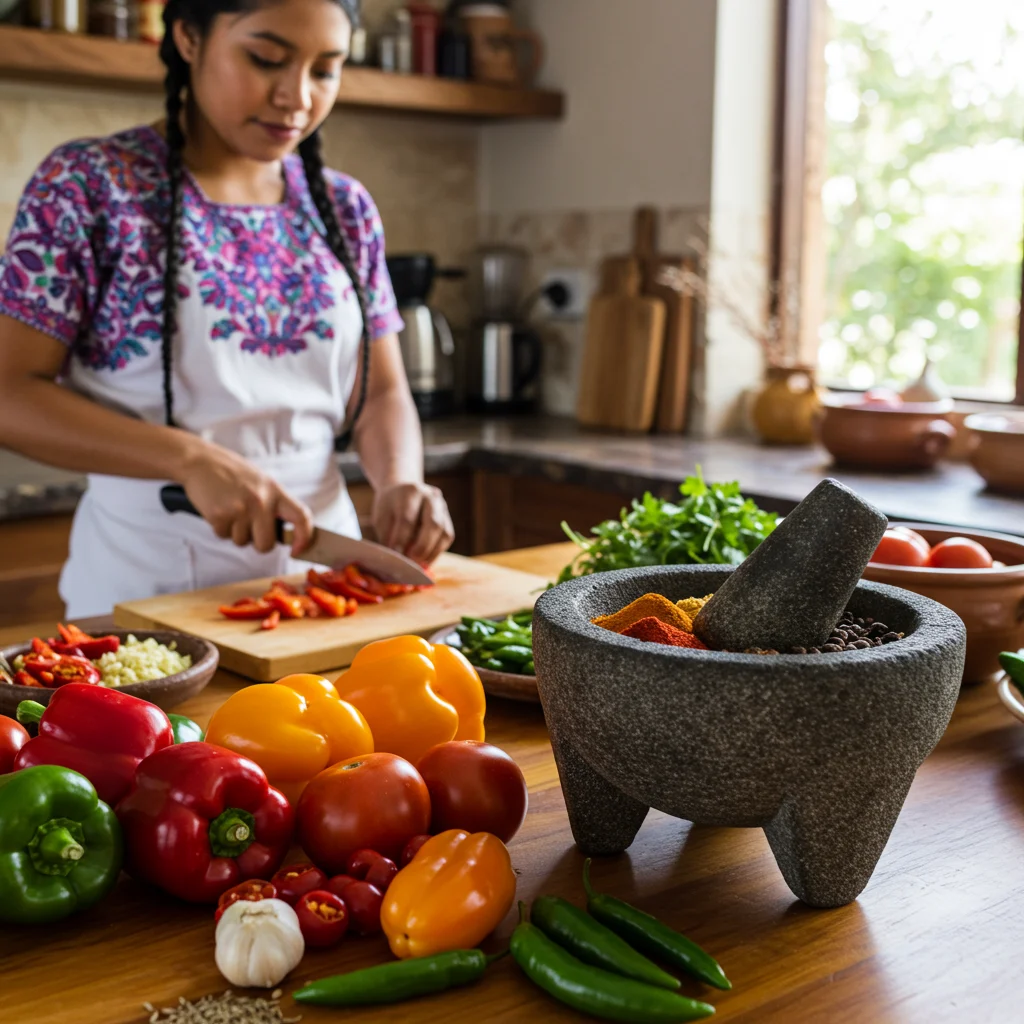
Step 1: Prepping the Ingredients
Begin by thoroughly washing and chopping vegetables, trimming your protein of choice, and measuring out all spices and seeds. Preparation is crucial for a seamless cooking experience.
How to Toast Spices and Seeds Properly
Heat a dry skillet or comal over medium heat. Add pumpkin seeds, sesame seeds, and whole spices, stirring constantly until they release a nutty aroma and turn golden. The gentle sizzle and subtle smokiness signal they are ready for grinding.
Preparing the Vegetables for the Stew
Cut potatoes, carrots, and chayote into uniform pieces for even cooking. Blanching green beans briefly helps retain their vibrant color and crispness in the final dish.
Marinating the Protein for Maximum Flavor
Marinate chicken, beef, or pork in a mixture of salt, pepper, and a dash of lime juice. Allowing the protein to rest for at least 30 minutes infuses it with subtle citrus notes and tenderizes the meat.
Step 2: Making the Pepian Sauce
After toasting and grinding the seeds and spices, they are combined with roasted tomatoes, onions, and chilies to create a deeply flavorful sauce.
Blending Roasted Ingredients for a Smooth Sauce
Char tomatoes, onions, and chilies over an open flame or under a broiler until blackened and blistered. Blend these with the ground seeds and spices, adding water as needed for a silky, rich sauce.
Adjusting Sauce Consistency and Flavor
Strain the blended sauce for a smooth finish. Taste and adjust salt, heat, or acidity, adding more chilies for spice or a touch of broth for a lighter consistency.
Step 3: Cooking the Stew
Combine marinated protein, vegetables, and sauce in a large pot. The slow simmering process melds flavors and tenderizes every ingredient.
Simmering Techniques for Rich Flavor
Bring the stew to a gentle boil, then reduce to a low simmer. Skim any foam from the surface and stir occasionally, allowing the sauce to thicken and envelop the protein and vegetables in its aromatic embrace.
How Long Should You Cook Pepian?
Cooking times vary by protein: chicken requires about 45 minutes, while beef or pork may need up to 90 minutes for perfect tenderness. The stew is ready when the sauce is thick and the meat is fork-tender.
Step 4: Final Touches and Garnishes
Once the stew is cooked, a few finishing touches elevate both visual appeal and taste.
Traditional Garnishes for Pepian
Fresh cilantro leaves, toasted sesame seeds, and a wedge of lime are classic garnishes. These provide color and a burst of freshness, balancing the stew’s rich flavors.
Serving Suggestions for Authentic Presentation
Serve Pepian in wide, shallow bowls alongside steamed white rice and warm corn tortillas. The inviting aroma and vibrant colors create an atmosphere that encourages guests to savor every bite.
What Are the Best Tips for a Successful Mayan Pepian Cooking Class?
Hosting a Pepian cooking class transforms meal preparation into an engaging, communal experience. Organization and creativity are key to a memorable event.
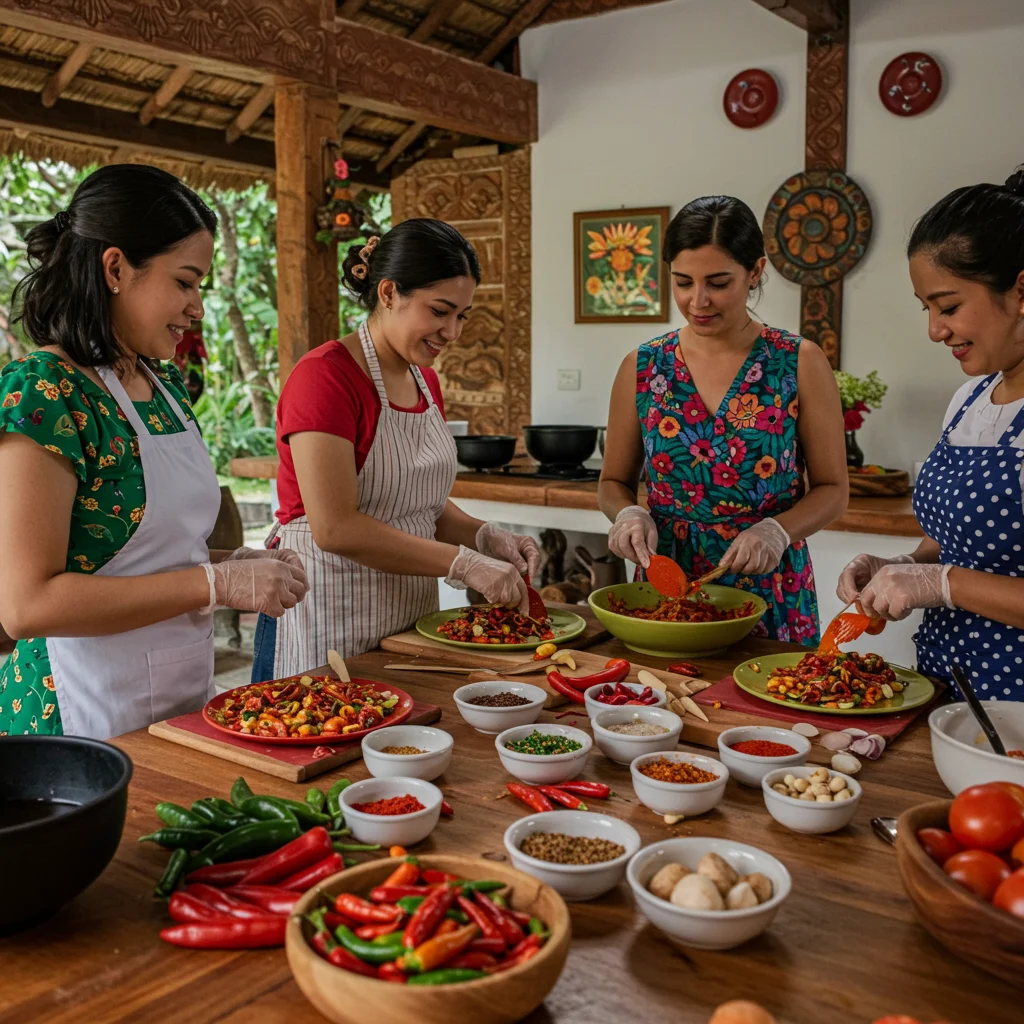
How to Organize a Group Cooking Experience
Divide participants into small teams, assigning roles such as chopping, toasting, or blending. Provide printed recipes and ingredient lists for smooth coordination. A welcoming, festive atmosphere encourages participation and learning.
Engaging Activities for Participants
Incorporate sensory elements—invite guests to smell freshly ground spices, taste-test sauces, or share stories about their own food traditions. These interactive moments foster connection and curiosity, much like the immersive experiences on a guided adventure tour.
Common Mistakes and How to Avoid Them
- Rushing the toasting process, which can burn seeds and spoil the flavor
- Overcrowding the pot, leading to uneven cooking
- Neglecting to taste and adjust seasoning throughout
Encourage participants to take their time and trust their senses, ensuring a delicious outcome every time.
Pepian Cooking FAQs
We often receive questions about adapting and storing Pepian. Here are answers to the most common inquiries.
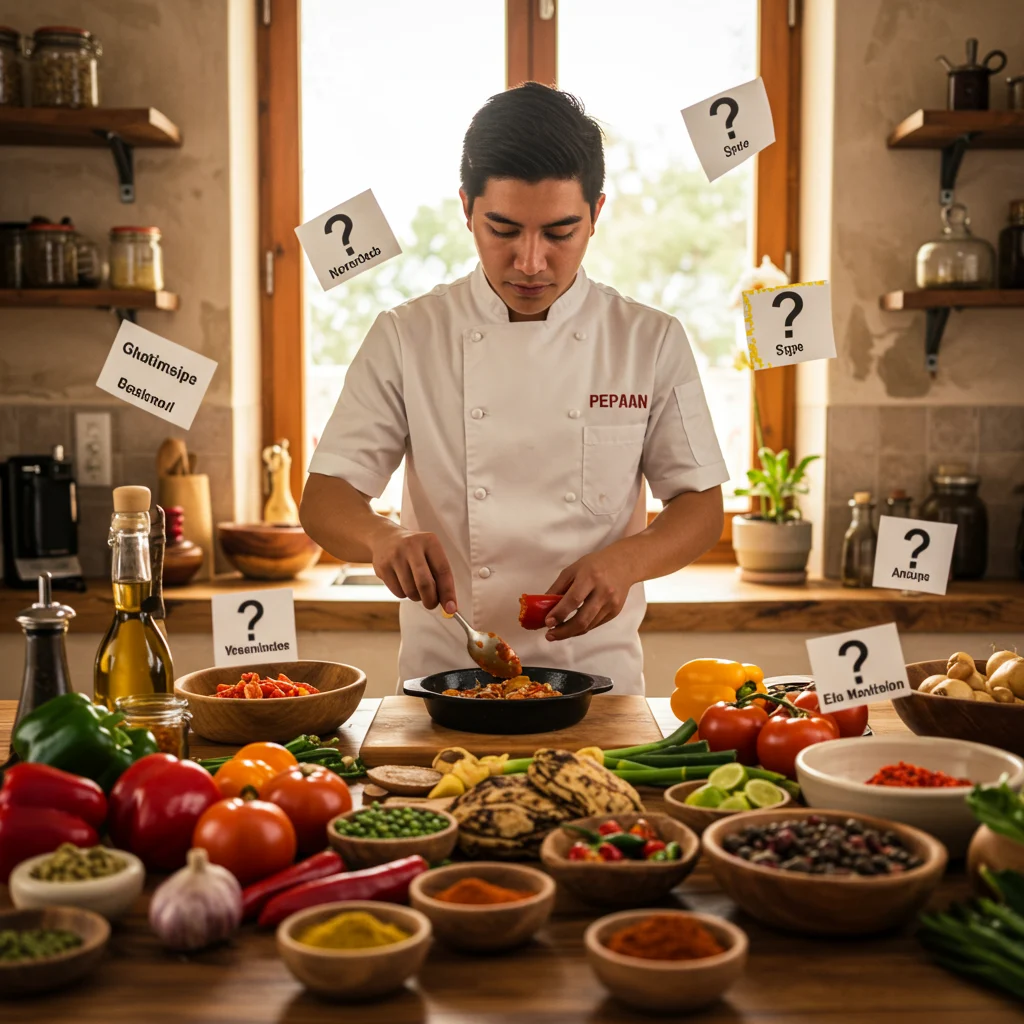
Can Pepian Be Made Vegetarian or Vegan?
Absolutely. Substitute the protein with hearty vegetables such as mushrooms, eggplant, or jackfruit. Use vegetable broth for the sauce. The resulting stew is both satisfying and packed with flavor, echoing the creativity found in many vegan and vegetarian culinary tours.
How Can You Store and Reheat Leftover Pepian?
Store cooled Pepian in an airtight container in the refrigerator for up to four days. Reheat gently on the stovetop over low heat, adding a splash of broth or water if the sauce has thickened too much.
What Are the Best Side Dishes to Serve with Pepian?
Traditional sides include steamed rice, warm corn tortillas, and pickled vegetables. Each complements the stew’s robust flavors and provides textural contrast.
Can You Freeze Pepian for Later?
Pepian freezes well. Allow the stew to cool completely, then portion into freezer-safe containers. Thaw overnight in the refrigerator and reheat gently for a convenient, flavorful meal.
Is Mayan Pepian a Healthy Choice?
Pepian offers a balance of lean protein, vegetables, and nutrient-dense seeds and spices. Its wholesome ingredients make it a nourishing option for most diets.
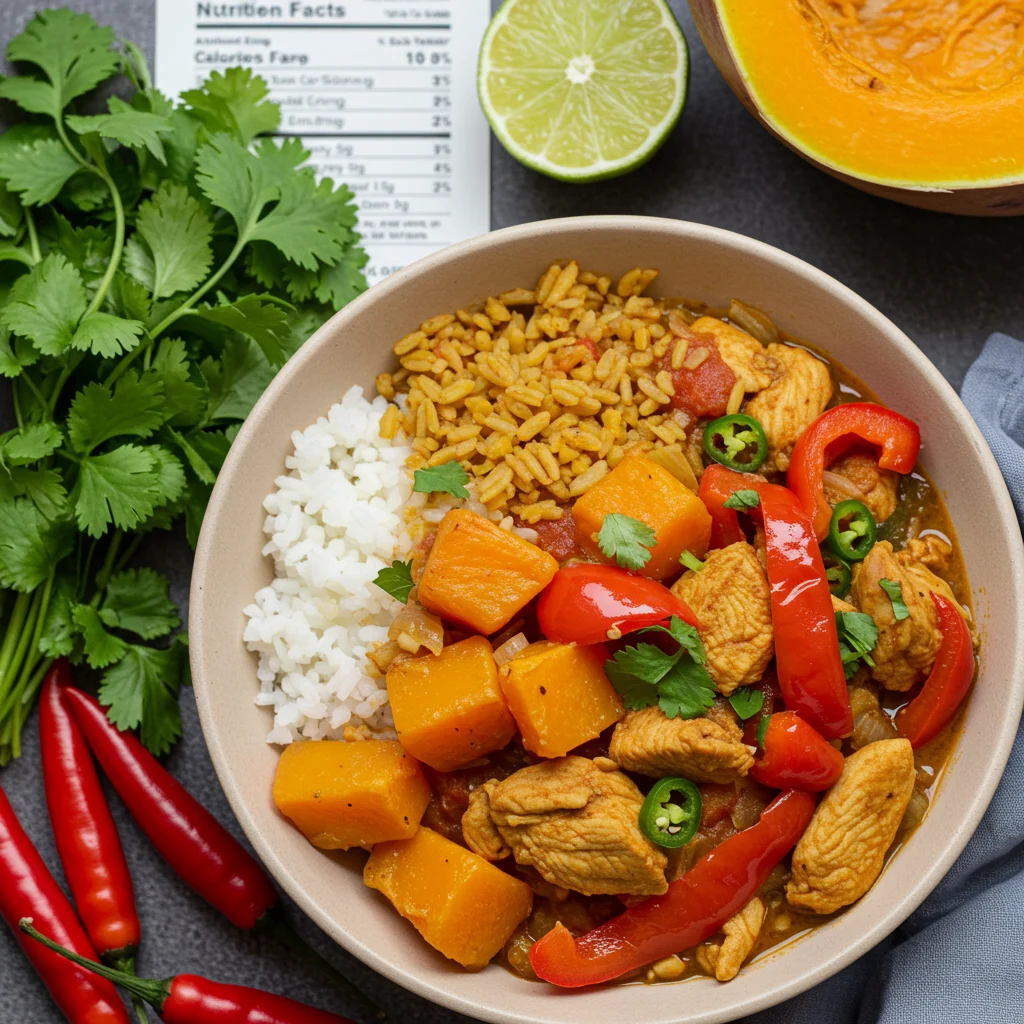
How to Make Pepian Gluten-Free
Pepian is naturally gluten-free when served with rice and corn tortillas. Always check labels on store-bought broths or spice mixes to avoid hidden gluten.
Calorie and Nutrient Breakdown
A typical serving of chicken Pepian provides a moderate amount of calories, healthy fats from seeds, and a generous dose of vitamins and minerals from the vegetables and herbs. Adjustments can be made for lower calorie or reduced sodium versions if desired.
What Are the Best Pairings for Pepian?
Pairing Pepian with the right drinks and sides enhances the meal and rounds out the dining experience.
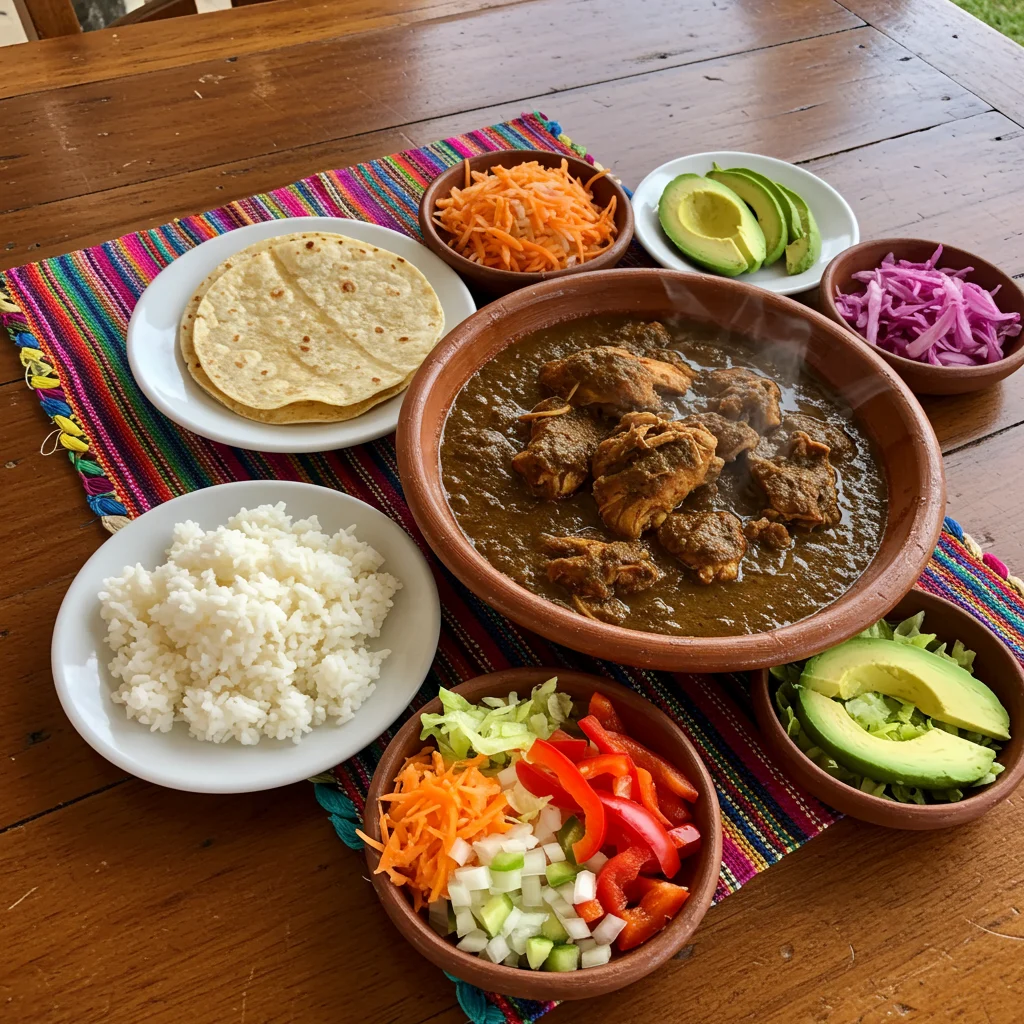
What Drinks Complement Pepian Best?
Traditional options include atol de elote (sweet corn drink), horchata, or a light lager. For a festive occasion, a glass of Guatemalan rum or a citrusy cocktail can add a celebratory touch.
Traditional Guatemalan Sides to Serve with Pepian
Alongside rice and tortillas, consider serving tamales, black beans, or pickled vegetables. These sides add variety and authenticity to the meal.
How to Create a Complete Mayan Meal Experience
Set the table with colorful textiles, play traditional marimba music, and serve dishes family-style. This creates an inviting atmosphere, much like the communal warmth experienced during group travel adventures.
How Does Pepian Vary Across Guatemala?
Regional variations in Pepian reflect the diversity of Guatemala’s landscapes and cultures. Each area brings its own twist to the classic recipe.
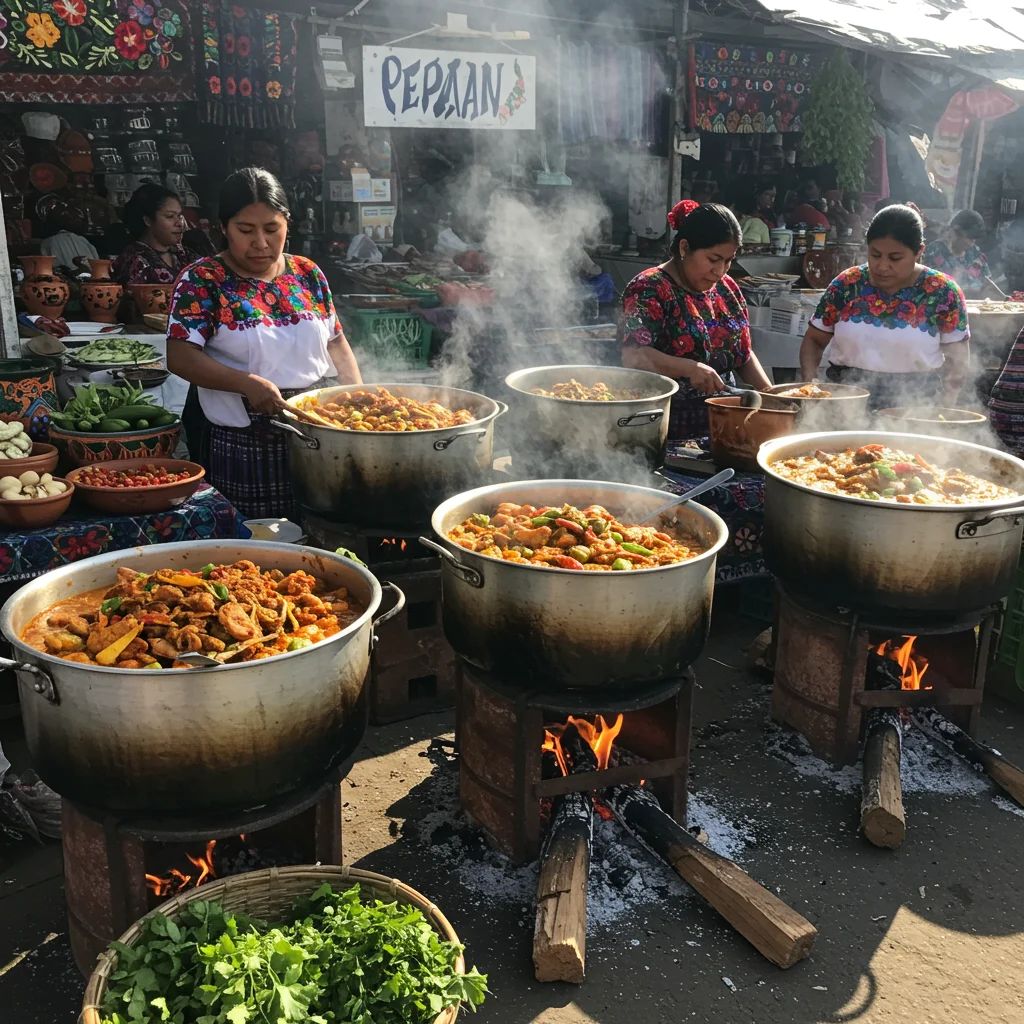
How Does Pepian Differ by Region in Guatemala?
In the highlands, Pepian is often spicier and thicker, while coastal versions may be lighter and feature seafood. Some regions incorporate local herbs or swap out certain vegetables based on seasonal availability.
Modern Twists on Classic Pepian
Contemporary chefs experiment with new proteins, vegan adaptations, and creative garnishes. These innovations honor tradition while appealing to changing tastes and dietary needs.
Pepian in Contemporary Guatemalan Cuisine
Pepian remains a menu staple in homes and restaurants alike. Its enduring popularity speaks to its adaptability and the comfort it provides. As experts often say:
“The best way to preserve culinary heritage is to cook, share, and celebrate it together.”
How Can You Share Your Pepian Cooking Class Experience?
Documenting your Pepian cooking class not only preserves memories but also inspires others to try their hand at Mayan cuisine.
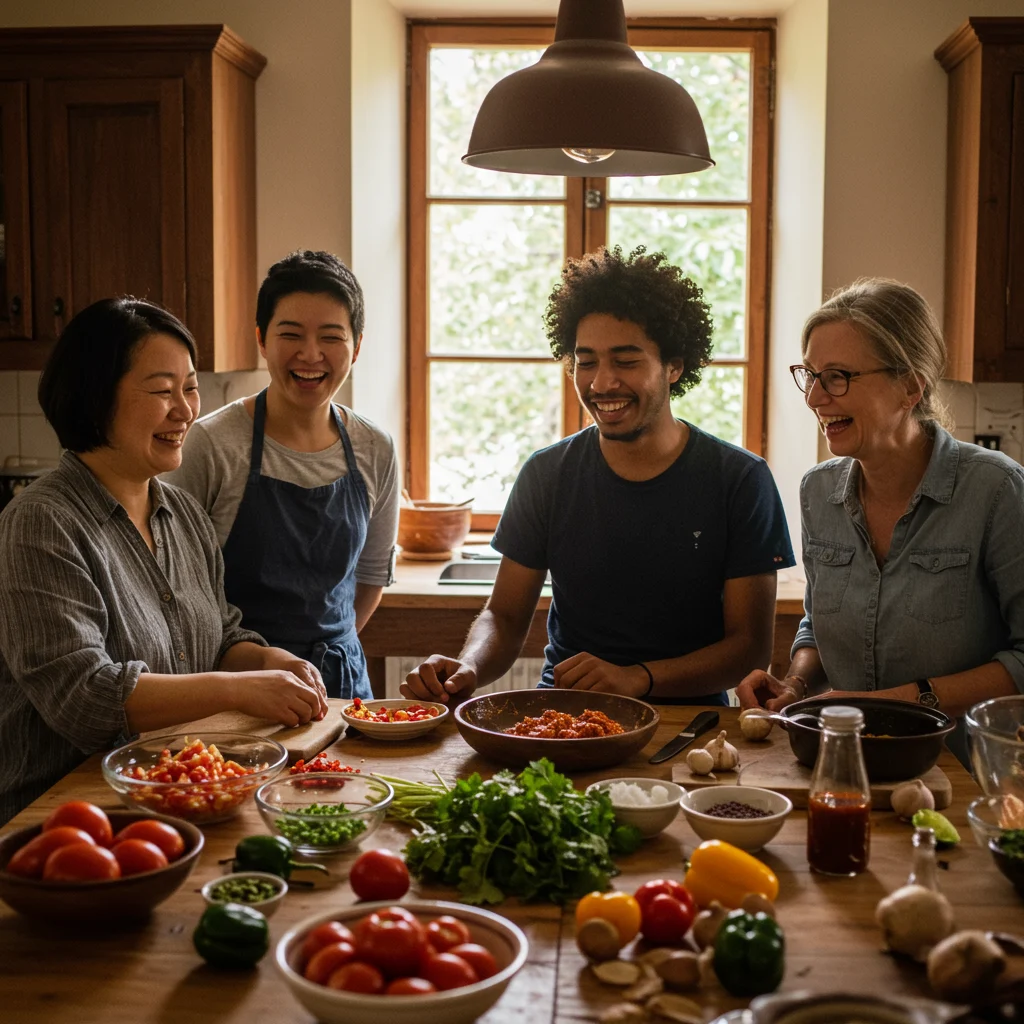
How to Photograph Your Pepian for Social Media
Use natural light to highlight the deep red hues of the sauce and the freshness of garnishes. Capture action shots of toasting seeds or blending sauce, as well as the final, beautifully plated dish. Candid moments of participants laughing or tasting add warmth and authenticity to your photos.
Inspiring Others to Try Mayan Cooking
Share your experiences, tips, and favorite flavor combinations online or at gatherings. Encourage friends and family to join your next cooking class or to plan their own culinary adventure, much like travelers seek out unique food experiences on a tequila tasting tour.
How to Book on Viator
If you are eager to deepen your culinary knowledge or experience a hands-on Pepian cooking class in Guatemala, you can find tours and classes through Viator. Their platform offers a range of cooking experiences, from market visits to professional workshops, making it easy to plan your trip.

To reserve your spot or browse other cultural activities, simply visit Viator’s website and explore the options available for your travel dates and interests.
Conclusion: Celebrate Mayan Heritage Through Cooking
Mastering Mayan Pepian at home is more than a culinary achievement—it is a way to honor Guatemalan heritage, create lasting memories, and bring people together around the table. Whether you prepare Pepian for a festive gathering or a quiet family meal, you are part of a living tradition that stretches back centuries. For more inspiration and resources, we invite you to visit Unisho and continue your journey into world cuisines.
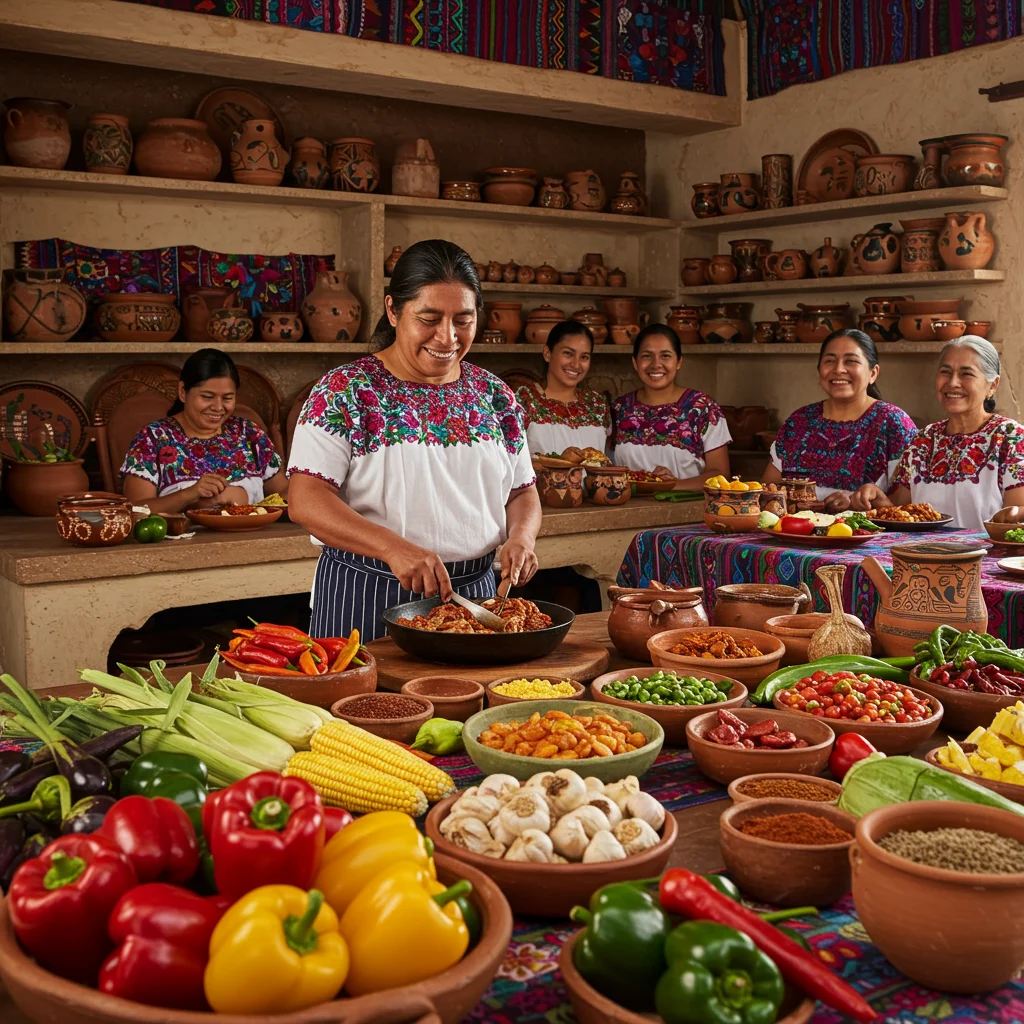
Further Resources and Recommended Reading
For those interested in expanding their knowledge or sourcing authentic ingredients, several resources can help bring your next Pepian to life.

Where to Find Authentic Mayan Ingredients Online
Look for reputable online retailers specializing in Latin American groceries. Many offer dried chilies, seeds, and specialty herbs shipped directly to your door.
Recommended Cookbooks and Documentaries
- “Guatemala: Recipes from the Land of the Eternal Spring” – A beautifully photographed cookbook with classic recipes and cultural insights.
- “Ixcanul” – A documentary film exploring Guatemalan rural life and culinary customs.
- Online cooking classes and blogs dedicated to Central American cuisine for continued learning.
Disclaimer: This information is accurate to the best of our knowledge; however, there may be changes or mistakes. Please verify exact details on the Viator booking page.

